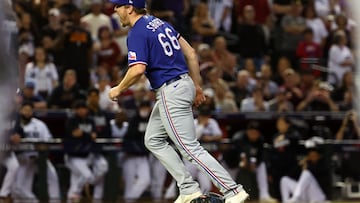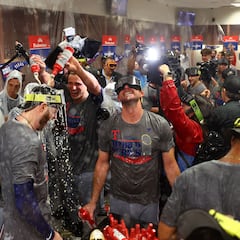What is the ‘ghost runner’ rule in Major League Baseball?
Baseball has made more changes in the last ten years than in the previous two centuries, but few have raised the fans’ ire like the phantom base runner. So why are they keeping it?


The beauty of baseball is in its simplicity, its fairness. One man with a ball tries to throw it past one man with a stick. You get three shots at it and they have to be hittable balls. No running out the clock. No rolling the ball in the dirt. It is even and fair.
This is perhaps what has irked so many about the analytics era of the game. While studying numbers to look for an edge is not in itself untoward, there is a gut feeling that attempting to somehow turn the tables on the house is, well… dirty. Something gamblers would do. It just is not baseball.
In an effort to speed the game up, Rob Manfred, that almost-universally despised commissioner who has wreaked more havoc on the game than any other of his predecessors, instituted a slew of changes to our beloved game. Pitch clocks and pickoff limits are anathema, but the phantom baserunner, the so-called Manfred Man, is the one that fans hate the most.
MLB's Joint Competition Committee has voted to make the "ghost runner" extra inning rule permanent for all regular season games, per @JesseRogersESPN pic.twitter.com/OoHbfCRY46
— B/R Walk-Off (@BRWalkoff) February 13, 2023
But what is the “ghost runner” in baseball?
Sneaked in during the pandemic-shortened 2020 season. The rule, for those who don’t know, places a base runner on second base to start each inning beyond the ninth inning during the regular season. No need at bats nor strikes taken, jut walk and collet 200, as if playing monopoly.
The rule is not a fan favortie. The main reason is that it is almost impossible not to score a runner on second with nobody out. Simply bunt him over to third and hit a sac fly to the outfield. Done. Any ball hit through the infield gets him around as well. In order to NOT score in that situation, a team would have to work pretty hard.
Players and coaches don’t mind it so much.
A single game during the regular season has little meaning, and so they will be thinking about getting done with it and resting for tomorrow. Not to mention the implications that it has on your bullpen, with middle relievers and closers being asked to throw perhaps double the number of pitches as they normally do.
Phillies manager Rob Thomson says he’s glad that MLB expects to keep the ghost runner/extra-inning rule in 2023 and beyond
— Bob Nightengale (@BNightengale) October 31, 2022
Related stories
The rule is not applicable to the post season, so the feeling is that it will generally be unremarkable. Until it impacts a tight Wild Card race, the league would seem to be in favor of getting the game finished quickly, and fairness be damned.
So after its temporary implementation, the 11-person competition committee voted to make the Manfred Man a permanent fixture in the baseball. Although the competition committee is made up of six ownership reps, four player reps, and one umpire; only five people have any skin in the game, and can be over ruled by ownership at any time; it must be pointed out that this rule implementation was unanimously approved.

